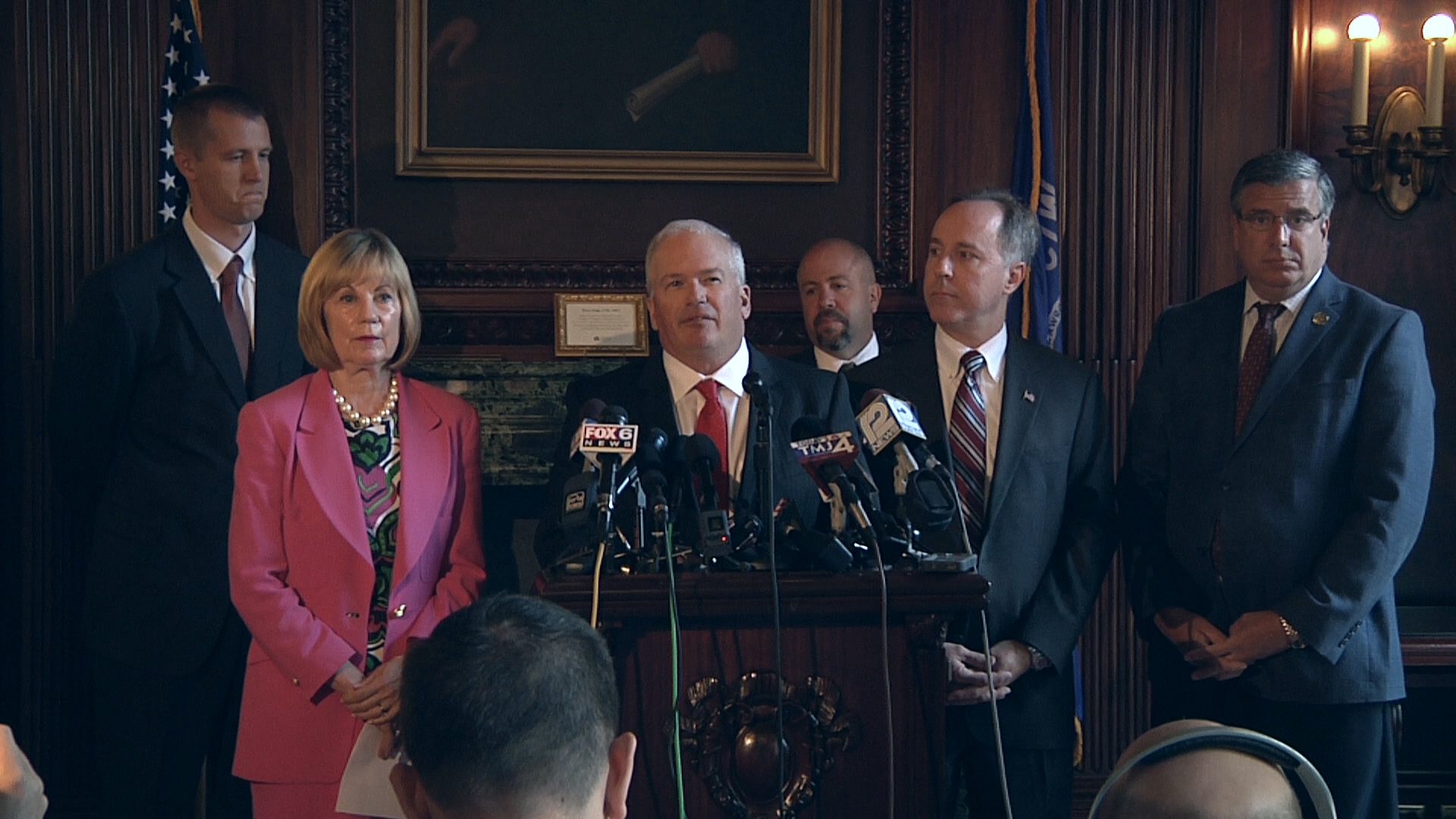
Sen. Lasee’s Compromise Plan On Prevailing Wage Making Its Way Into Budget; Vote Expected Today
MacIver Institute | July 7, 2015
Legislators are set to make their final deliberations on the budget, Bucks arena and prevailing wage reform this week. On prevailing wage, Sen. Frank Lasee (R-De Pere) forwarded a compromise plan that would exempt all local governments from having to pay prevailing wages on their government projects and change the flawed method that determines prevailing wage rates.
The prevailing wage law unnecessarily burdens taxpayers who must pay inflated wages, not wages established by the free market, just for political reasons. Here is a list of the top seven reasons why Wisconsin’s taxpayers deserve real prevailing wage reform:
1. Prevailing wage costs taxpayers hundreds of millions of dollars a year
– An in-depth study by the Wisconsin Taxpayers Alliance estimated up to $300 million in additional costs to taxpayers in 2014 alone from prevailing wages on vertical construction projects. That doesn’t even include non-vertical construction projects such as highway projects that cost billions every year.
2. Prevailing wage can inflate local project costs by 80 percent
– True story. A six-mile ATV trail in Vilas county was initially going to cost $30,000 per mile, but when the prevailing wage determination was made the price shot up to $55,000 per mile. In the Village of Grafton, an already completed water tower maintenance project – I repeat, already completed -received a prevailing wage determination after the fact and was forced to pay 44 percent of the whole project cost in back-pay to workers for a job they had long-since completed.
3. The method for determining prevailing wage rates is convoluted, and favors large contractors
– Prevailing wage rates are found by sending out surveys to contractors who did work in Wisconsin in a given year. Those contractors are expected to report every wage that was paid to every worker on every project. Unsurprisingly, the rate of return is only around 10 percent, and 80 percent of the returns are from union shops even though unions only represent 25 percent of construction workers in the state. But it gets worse, the state chooses an average of the top 51 percent of wages reported to set prevailing wage rates instead of an actual average of all wages reported.
4. Prevailing wage rates in Wisconsin are much higher than average rates reported by a more accurate federal survey
– The federal Bureau of Labor Statistics also gathers wage rate information by occupation using surveys; except their return rate is 74 percent and they use actual averages. It turns out that Wisconsin’s prevailing wage rates are much higher than BLS rates for the same occupations and areas. In 2014, a general laborer in Milwaukee earned $28.31 an hour under prevailing wage, which was 35 percent higher than what the BLS said the rate should be. Prevailing wage also gave landscapers in Madison $21.01 an hour, or 57 percent higher than BLS data, and sheet metal workers in Green Bay earned $29.35 an hour which is 63 percent higher than BLS figures.
5. Road construction flaggers can make $90,000 a year
– One of the best examples of ridiculous wage inflation under prevailing wage is how much road construction flaggers make under the law. In Waukesha County, a flagger – those people that stand on the side of the road and turn signs – makes $23.55 an hour and collects $20.03 in benefits per hour. In annual salary terms, that’s a combined compensation package of $90,000 a year. For comparison, the median annual household income in Wisconsin is $52,413.
6. The absence of prevailing wage will not lead to a drop in project quality
– Many supporters of prevailing wage claim that the quality of work on public projects will suffer in the absence of prevailing wage. That is because government is required by law to hire the “lowest responsible bidder” to perform work on a project and some fear that shoddy contractors will win project bids and do subpar work. This claim conveniently ignores the word “responsible” in “lowest responsible bidder.” Government has the right to properly vet bidding contractors to make sure they will be able to complete the job sufficiently. The “shoddy work” claim is just a scare tactic.
7. Prevailing wage hurts taxpayers the most on Wisconsin’s most pressing needs
– Nearly everyone agrees that public projects such as building and repairing schools and maintaining Wisconsin’s roads are top priorities. Prevailing wages inflate the costs of these projects by 9-13.5 percent on average. Why should taxpayers needlessly spend more to do these projects rather than having more money to complete them?
The other important question to ask about these plans is how much taxpayers could save under each scenario. While there are no official fiscal estimates on savings in the plans, a few resources give us an idea of what taxpayers could save under full repeal.
A study from the Wisconsin Taxpayers Alliance says that Wisconsinites could have saved $200-$300 million on vertical construction projects in 2014 in the absence of prevailing wage. That estimate doesn’t even consider all other public construction that goes on in the state, including billions of dollars on road construction projects.
Evidence from Ohio also hints at the kind of windfall taxpayers could see from prevailing wage reform. In 1997, Ohio lawmakers exempted school districts from their prevailing wage law. Five years later, the state found that nearly $500 million had been saved on school construction because of the prevailing wage exemption.





